Prime Minister of Brazil
Historically, the political post of Prime Minister, officially called President of the Council of Ministers, existed in Brazil in two different periods: from 1847 to 1889 (during the Empire) and from 1961 to 1963 (under the Fourth Republic).
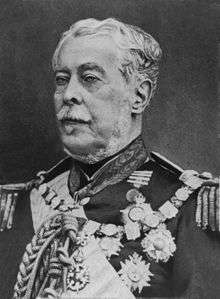
The parliamentary system was first introduced in the country in 1847 by Emperor Pedro II and maintained until the abolition of the monarchy in 1889. The system was briefly restored during the tenure of President João Goulart between 1961 and 1963, after a constitutional amendment approved by his opponents before the beginning of his term created the post; it was abolished with a plebiscite.
Below are more detailed descriptions of the post in each period.
Prime Ministers of the Empire of Brazil (1847–1889)
| Prime Minister of the Empire of Brazil | |
|---|---|
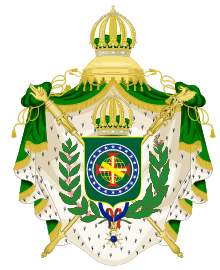 | |
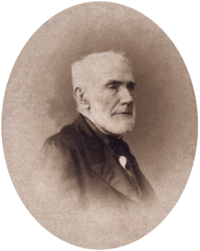 | |
| Residence | Rio de Janeiro, Empire of Brazil |
| Seat | Imperial Palace |
| Appointer | Emperor of Brazil (1847–1889) |
| Term length | No term limit |
| Formation | 20 July 1847 |
| First holder | The 2nd Viscount of Caravelas |
| Final holder | The Viscount of Ouro Preto |
| Abolished | 15 November 1889 |
The political position of Prime Minister of Brazil was first created in 1847 by the Brazilian Emperor Pedro II officially as President of the Council of Ministers, but he was referred to by the press and the people as President of the Cabinet. Often, the title President of the Council, a shortened version of the official style, was also employed.
The written Constitution of the Brazilian Empire did not require the Emperor to appoint a prime minister; nor did it provide for a parliamentary system of government, instead vesting the Executive authority in the Emperor himself, and stipulating that the Emperor was to be aided by ministers that he was free to appoint and dismiss. However, Emperor Pedro II decided to appoint a president of the Council among his ministers, to lead the workings of the Government. He also chose to create a sort of parliamentary government, whereby the prime minister would be someone who could command a majority in the Chamber of Deputies, the lower House of the Brazilian Imperial Parliament, known as General Assembly. Therefore, even without being required by the Constitution, the Emperor started to exercise his authority in a manner compatible with parliamentary government, only appointing as prime minister someone who could retain parliamentary support, etc.
However, the emperor was not a figurehead monarch like other heads of State in a parliamentary system. The prime minister needed to retain the political confidence both of a majority of the Chamber of Deputies and of the Emperor, who actively scrutinized the workings of the Government. Sometimes the Emperor would dissolve the Chamber of Deputies and summon new elections (a power he possessed under the Constitution), or dismiss the prime minister, due to his own political beliefs about the efficiency of the Government. Thus, the Emperor would often dismiss a prime minister, and then appoint someone else from the same party. All this led to a succession of short-lived Cabinets. The emperor retained decision-making powers with regard to the signature or veto of bills passed by Parliament, and would not always abide by the advice of his ministers. And that was seen as normal given that the monarch wasn't required by the Constitution to reign in a parliamentary system, and the establishment of one was only a limited and voluntary decision of Pedro II.
Therefore, the parliamentary system voluntarily established by Emperor Pedro II wasn't identical to the standard of a parliamentary government with a Head of State that reigns but does not govern, given that the Emperor retained part of the control over the daily affairs of his government. Thus, the parliamentary system that was put in place in the reign of Pedro II can be termed a semi-parliamentary Government, and can be compared to the political system of some republics, such as France, that are governed under a semi-presidential system, in which the Head of State has more than just the customary reserve powers, but there is also a prime minister who needs to maintain the confidence of Parliament in order to retain his office.
This co-existence of a Head of State with real powers and influence with a prime minister responsible before Parliament was dubbed by many Brazilian political scientists as parlamentarismo às avessas (backwards parliamentarism), a criticism corresponding to their view that, in the parliamentary system created by Emperor Pedro II, the Chamber of Deputies was the weaker party, and the survival of the Cabinet depended more on the confidence of the Emperor than in that of Parliament.
Shortcomings in party loyalty, with members of Parliament and groups of members rooting for their own interests and not always abiding by the directives of the party leadership also contributed greatly to short-lived Cabinets. Indeed, it was very common for a Prime Minister to be replaced due to lack of support from his party's backbenchers, causing the Prime Minister to be replaced with somebody else from the same party, during the same Parliament.
During the forty-nine years of Pedro II's personal reign, from 1840 until 1889 there were sixteen parliamentary elections (eleven provoked by the dissolution of Parliament by the Emperor at the Prime Minister's request, with the summoning of new elections, and five others provoked by the expiration of the term of office of the members of the Chamber of Deputies). This means that, on average, each legislature of the Chamber of Deputies had a life span slightly superior to three years. However, in the forty two years between the creation of the office of Prime Minister in 1847 and its abolition in 1889, there were thirty two appointments to the presidency of the Council, which means that prime ministerships lasted on average a little more than a year and four months. Certain politicians, however, like the Duke of Caxias, Marquis of Olinda, and Zacarias Góis e Vasconcellos managed to regain the prime ministership after having lost it. Caxias and Zacarias Góis e Vasconcellos each served three times as President of the Council, while Olinda held the office of Prime Minister for a record of four times.
The president of the Council owed his position to both his party's majority in the Legislature (and to his party's willingness to support him in the Chamber) and to the Emperor, and these two sources of authority (parliamentary backing and imperial appointment) could sometimes come into conflict. 19th century abolitionist leader and historian Joaquim Nabuco said:
The President of the Council in Brazil was no Russian Chancellor, Sovereign's creature, nor a British Prime Minister, made only by the trust of the Commons: the delegation of the Crown was to him as necessary and important as the delegation of the Chamber, and, to exert with safety his functions, he had to dominate the caprice, the oscillations and ambitions of the Parliament, as well as to preserve always unalterable the favor, the good will of the Emperor.[1]"
— Joaquim Nabuco, 1899
The shortest prime-ministership was the first of the three periods of Zacarias Góis e Vasconcellos in office, when he occupied the presidency of the Council for just a few days in May 1862 before being replaced. The longest continuous prime-ministership corresponded to the period when the Viscount of Rio Branco was in office: he served as President of the Council from March 1871 until June 1875. The Viscount of Rio Branco served as Prime Minister only once, however, and his period of service as Prime Minister is surpassed by the total duration of the four non-consecutive premierships of the Marquis of Olinda, making Olinda the longest serving President of the Council if non-consecutive time is considered.
The position of prime minister was abolished with the deposition of the Monarchy in 1889.
List of Prime Ministers of the Empire of Brazil
- Parties
| # | Name | Portrait | Term of office | Tenure |
|---|---|---|---|---|
| 1 | Manuel Alves Branco 2nd Viscount of Caravelas | 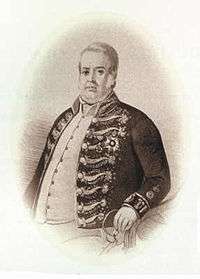 | 20 July 1847 — 8 March 1848 | 352 days |
| 2 | José Carlos Pereira de Almeida Torres Viscount of Macaé | 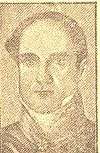 | 8 March 1848 — 31 March 1848 | 23 days |
| 3 | Francisco de Paula Sousa e Melo | .png) | 31 March 1848 — 29 September 1848 | 182 days |
| 4 | Pedro de Araújo Lima Viscount, later Marquis of Olinda |  | 29 September 1848 — 8 October 1849 | 1 year, 9 days |
| 5 | José da Costa Carvalho Marquis of Monte Alegre |  | 8 October 1849 — 11 May 1852 | 2 years, 216 days |
| 6 | Joaquim Rodrigues Torres Viscount of Itaborai |  | 11 May 1852 — 6 September 1853 | 1 year, 118 days |
| 7 | Honório Hermeto Carneiro Leão Marquis of Paraná | 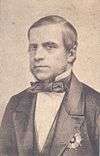 | 6 September 1853 — 3 September 1856 | 2 years, 363 days |
| 8 | Luís Alves de Lima e Silva Duke of Caxias (then Marquis) |  | 3 September 1856 — 4 May 1857 | 1 year, 1 day |
| 9 | Pedro de Araújo Lima Marquis of Olinda |  | 4 May 1857 — 12 December 1858 | 1 year, 222 days |
| 10 | Viscount of Abaeté |  | 12 December 1858 — 10 August 1859 | 1 year, 120 days |
| 11 | Baron of Uruguaiana | 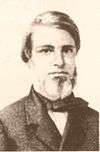 | 10 August 1859 — 2 March 1861 | 1 year, 204 days |
| 12 | Duke of Caxias (then Marquis) |  | 2 March 1861 — 24 May 1862 | 1 year, 83 days |
| 13 | Zacarias de Góis e Vasconcelos | 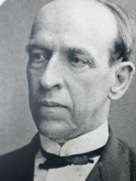 | 24 May 1862 — 30 May 1862 | 6 days |
| 14 | Marquis of Olinda |  | 30 May 1862 — 15 January 1864 | 1 year, 230 days |
| 15 | Zacarias de Góis e Vasconcelos |  | 15 January 1864 — 31 August 1864 | 229 days |
| 16 | Francisco José Furtado | 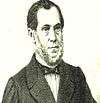 | 31 August 1864 — 12 May 1865 | 254 days |
| 17 | Marquis of Olinda |  | 12 May 1865 — 3 August 1866 | 1 year, 83 days |
| 18 | Zacarias de Góis e Vasconcelos |  | 3 August 1866 — 16 July 1868 | 1 year, 348 days |
| 19 | Viscount of Itaboraí |  | 16 July 1868 — 29 September 1870 | 2 years, 75 days |
| 20 | Viscount, later Marquis of São Vicente |  | 29 September 1870 — 7 March 1871 | 159 days |
| 21 | Viscount of Rio Branco | 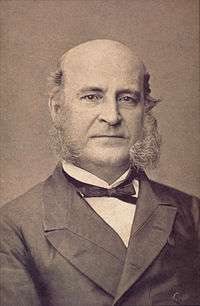 | 7 March 1871 — 25 June 1875 | 4 years, 110 days |
| 22 | Duke of Caxias |  | 25 June 1875 — 5 January 1878 | 2 years, 345 days |
| 23 | Viscount of Sinimbu | 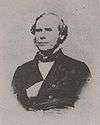 | 5 January 1878 — 28 March 1880 | 2 years, 83 days |
| 24 | José Antônio Saraiva |  | 28 March 1880 — 21 January 1882 | 1 year, 299 days |
| 25 | Martinho Álvares da Silva Campos | 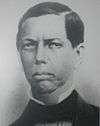 | 21 January 1882 — 3 July 1882 | 163 days |
| 26 | Viscount, later Marquis of Paranaguá | 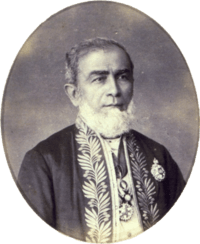 | 3 July 1882 — 24 May 1883 | 325 days |
| 27 | Lafayette Rodrigues Pereira | 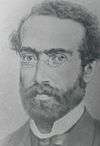 | 24 May 1883 — 6 June 1884 | 1 year, 13 days |
| 28 | Manuel Pinto de Sousa Dantas | 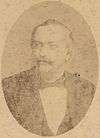 | 6 June 1884 — 6 May 1885 | 334 days |
| 29 | José Antônio Saraiva |  | 6 May 1885 — 20 August 1885 | 106 days |
| 30 | Baron of Cotegipe | 20 August 1885 — 10 March 1888 | 2 years, 203 days | |
| 31 | João Alfredo Correia de Oliveira |  | 10 March 1888 — 7 June 1889 | 1 year, 89 days |
| 32 | Viscount of Ouro Preto | _c_1889.jpg) | 7 June 1889 — 15 November 1889 | 161 days |
The proclamation of the Republic as a coup to remove the Prime Minister
The events of the proclamation of the Republic on 15 November 1889 started as an unprecedented military coup to remove the Liberal Prime Minister Viscount of Ouro Preto, who had been appointed by the Emperor and who enjoyed the confidence of the Chamber of Deputies. Marshal Deodoro da Fonseca, the senior leader and military figure in the plot, was supportive of the Conservative Party and took part in the coup upon invitation by other officers who wanted to overthrow the Liberal Prime Minister. Initially, Deodoro intended to force a Cabinet change, but not to depose Emperor Pedro II. Several of his co-conspirators, however, were republicans, and later in the day the events of the military coup progressed to the abolition of the monarchy. The decision to establish a republican provisional government was taken when Deodoro (who had already proclaimed "Long Live His Majesty the Emperor" during the public acts of the coup) received, from his republican co-conspirator Benjamin Constant Botelho de Magalhães, the false news that the Emperor intended to appoint Gaspar da Silveira Martins, a declared enemy of Deodoro, as the next Prime Minister.
After the republic was proclaimed, a presidential executive replaced the parliamentary system of government.
Prime Ministers of the United States of Brazil (1961–1963)
| Prime Minister of the United States of Brazil | |
|---|---|
 | |
 | |
| Residence | Brasília, Brazil |
| Appointer | President of Brazil (1961–1963) |
| Formation | 2 September 1961 |
| First holder | Tancredo Neves |
| Final holder | Hermes Lima |
| Abolished | 23 January 1963 |
After the coup d'état that abolished the monarchy and proclaimed Brazil a republic, the system of parliamentary government was not retained. The new republic instead adopted the model of a presidential executive, except for a brief period (September 7, 1961 to January 23, 1963) during the presidency of President João Goulart.
The parliamentary system was adopted in 1961 as a compromise solution to a grave political crisis, and was again abolished, this time by plebiscite, in January 1963.
The official title of the head of the government during that period was President of the Council of Ministers, the same official title possessed by the 19th-century prime ministers of the Brazilian Empire. However, the holders of the office were informally addressed and referred to as Premier or Prime Minister. Often, the expression President of the Council, a simplified version of the official title, was also used.
List of Prime Ministers of the United States of Brazil
- Parties
| # | Name | Portrait | Took office | Left office | Party |
|---|---|---|---|---|---|
| 1 | Tancredo de Almeida Neves |  | 8 September 1961 | 12 July 1962 | Social Democratic Party |
| 2 | Francisco de Paula Brochado da Rocha |  | 12 July 1962 | 18 September 1962 | Social Democratic Party |
| 3 | Hermes Lima |  | 18 September 1962 | 23 January 1963 | Brazilian Labour Party |
See also
| Wikimedia Commons has media related to Prime ministers of Brazil. |
- List of Brazilian monarchs
- List of Presidents of Brazil
- President of Brazil
References
- Nabuco, Joaquim (1975). Um Estadista do Império. único (4 ed.). Rio de Janeiro: Nova Aguilar, p. 712
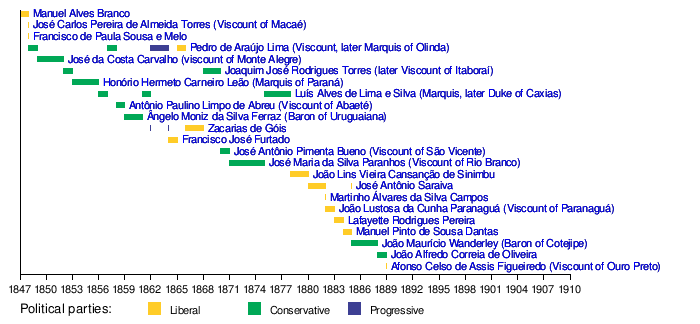

.svg.png)